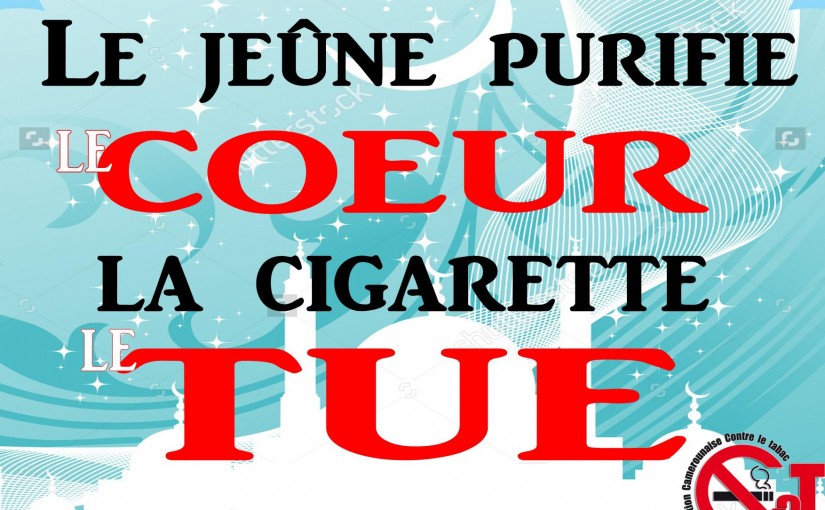Following Joint Order No 001/MINSANTE/MINCOMMERCE of 03 January 2018 laying down modalities for the packaging and labeling of tobacco products marketed in Cameroon signed by the Ministers of Public Health, André Mama Fouda and his counterpart of Trade, Luc Magloire Mbarga Atangana, all tobacco packages will from January 2019 henceforth, carry graphic health warnings.
Graphic health warnings, it should be noted, is the affixing of images accompanied by textual messages reflecting the afflictions related to the consumption of tobacco on packaging of tobacco products. Article 26 of the joint ministerial order had given 12 months from the date of signature for manufacturers, importers, distributors and vendors of tobacco products established in Cameroon to comply.
At a press conference in Yaounde last November 22 organised by the Cameroon Coalition for Tobacco Control, C3T, and speaking on behalf of the President, Dr. Flore Ndembiyembe, the Communication Officer, Prince Mpondo, said the move by government is in line with article 11 of the WHO Framework Convention on Tobacco Control, FCTC. Referring to the graphic health warnings as a major regulatory measure adopted by the Cameroon government, he said it will enable smokers to become conscious of the health risks they are exposed to while consuming tobacco products.
Mpondo said unlike the 2007 text, the new regulation does not only provides for a few text warning, but now imposes the affixing on the packaging of tobacco products, images of the diseases related to tobacco use with specific messages. Such health warnings and images to be found on cigarette packages from January 2019 would include the following messages: “Smoking Kills. We will also see images of tobacco related diseases like mouth cancers, lung cancers, tooth decay, as well as images translating the following phrase ‘smoking cause a slow and painful death where a man is visibly sick and bedridden,'” he told reporters.
Article 4 of the joint order of January 3, 2018, prohibits any message, symbol, name, figurative sign or any other element that: “contributes to the promotion of a tobacco product or encourages its consumption by giving an erroneous impression as to the characteristics, health effects, risks or emissions of the product. The same article also prohibits suggestions that a given tobacco product is less harmful than another or aims to reduce the effect of certain harmful components of the smoke; that a tobacco product has vitalising, energising, healing, rejuvenating, natural or biological properties or has beneficial effects on health or lifestyle; and that a given tobacco product is more easily biodegradable than another, or has other environmental benefits.
Other prohibitions are: evoking a taste, smell, aroma or any other additive, or lack thereof; looking like a product of common use, food or cosmetic as well as suggesting an economic benefit through good print, commercial discount offers, free distribution, and so on.
Prince Mpondo reiterated that the cigarette package should not serve as an advertising instrument for the industry. “It should not carry messages on the qualities of the product (light cigarette, soft, unbeatable, international quality, etc); on the danger level of one product with regards to another; on aromas (apple, mint, strawberry, chocolate) as is currently the case.
Meanwhile, article 8 (2) says the general warning and the image must cover at least 70 percent of the external surface of the front face of the packaging unit while article 9 (2) states that specific images and warnings indicated in article 7 must cover at least 70 percent of the external surface of the rear face of the packaging unit.
Article 15 of the joint order stipulates that sticks of cigarettes are packaged in packs of twenty (20) units thus eliminating the current phenomenon where cigarettes are packaged in packs 10 units. Article 21 (1) notes that the specific images and warnings on packs, cartons, cases or any other packaging of tobacco products must alternate every 24 months in such a way as to guarantee their regular appearance.
On the other hand and going by article 22, manufacturers and importers of tobacco and tobacco products, including wholesalers and retailers who commercialise tobacco and tobacco products, are responsible for their products' compliance with the packaging and labeling measures.
On what awaits defaulters in terms of sanctions, article 28 states: “Any offender violating the provisions of this administrative order shall be liable to sanctions set forth by the regulations in force, without impairment to legal prosecution for hazardous activities, pursuant to the provisions of articles 74 and 228 of the Penal Code.”

 (
( (
(







